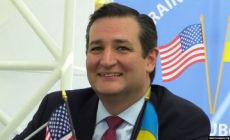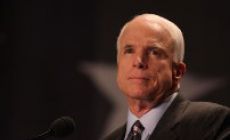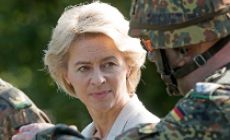Armenia is getting rid of the Soviet Past

Experts of the Ukrainian council on foreign relations described the ongoing internal developments in Armenia and underlined the roots of the mass protests in this country:
- Protests began in mid-April after Sargsyan was appointed Prime Minister. Sargsyan had previously served as Armenian president for 10 years, and the thousands of protesters who hit the streets of Yerevan saw his latest appointment as an unconstitutional power grab.
- Under constitutional changes Sargsyan promoted in 2015, the prime minister became more powerful than the president, leading to concerns of authoritarian rule descending on the small former Soviet republic, which borders Azerbaijan, Turkey, Iran and Georgia.
- Sargsyan stepped down as Prime Minister. His deputy, Karen Karapetyan, was then named acting Prime Minister at an emergency Cabinet meeting.
- Armenians have seen their country, once the poster child for democratization after the collapse of the Soviet Union, stagnate in the hands of an entrenched oligarchy while many citizens choose to leave.
Description of what is going on
- Pashinyan, 42, lost a parliamentary vote on Tuesday to become interim prime minister.
- The vote followed the resignation last week of former prime minister Serzh Sargsyan, who was forced to step down amid weeks of mass demonstrations, led by Pashinyan's movement.
- But Pashinyan's bid to become the new prime minister was stopped by the Republican party, which holds a majority in parliament and is allied to Sargsyan, after nine hours of bad-tempered debate.
- After losing the vote, Pashinyan called for protests on Wednesday.
- Protestors blocked streets in the capital and other small city in the country.
- Less than 1 million people live in the capital and therefore hundreds of thousands of protestors on the streets are considered as a significant number.
- Pro-Russian majority in the Parliament rejected decisively the candidature of Pashynyan.
Russia’s reaction
- Russia is likely to be watching the outcome of it's former Soviet republic closely -- the countries maintain close relations, with Moscow also an important provider of military hardware to Yerevan.
- While Russia does not share a border with Armenia, it wields serious regional influence.
- When fighting broke out in 2016 between Azerbaijan and the Armenia-backed region of Nagorno-Karabakh, the Russian government quickly brokered a ceasefire.
- But the Kremlin is also suspicious of what Russian officials describe as "colored revolutions" -- democratic uprisings that have led to the ouster of friendly governments in Ukraine, Georgia and elsewhere -- as well as opposition demonstrations at home.
- So far, Pashinyan has focused his criticism on domestic issues, rather than relations with Russia. How that would play out were he to be elected prime minister, is yet to be seen.
Забезпечити припинення будівництва Північного потоку 2

Тед Круз
"Північний потік 2 становить серйозну загрозу національній безпеці США та нашим європейським союзникам", - сказав сенатор Тед Круз. "Закон про захист енергетичної безпеки Європи буде протидіяти експансіонізму Росії, орієнтуючи
Росія продемонструвала, що вона не прагне до миру

Голова комітету Сенату США з питань збройних сил сенатор Джон Маккейн
Амбіції Володимира Путіна щодо відновлення Російської імперії зробили ще один крок вперед сьогодні, коли російські сепаратисти в Донецькій області України проголосили незалежну державу і прийняли назву з часів царської епохи "Малоросія".
Через дії в Україні Росія повністю втратила довіру до себе

Урсула фон дер Ляєн
Наскільки насправді великі навчання? Точний розмір відомо лише Москві та Мінську. Сусіди та багато партнерів в НАТО припускають, що фактична кількість сил, задіяних на російській та білоруській стороні, перевищує офіційно зареєстровану кількість 12,700 військових.
